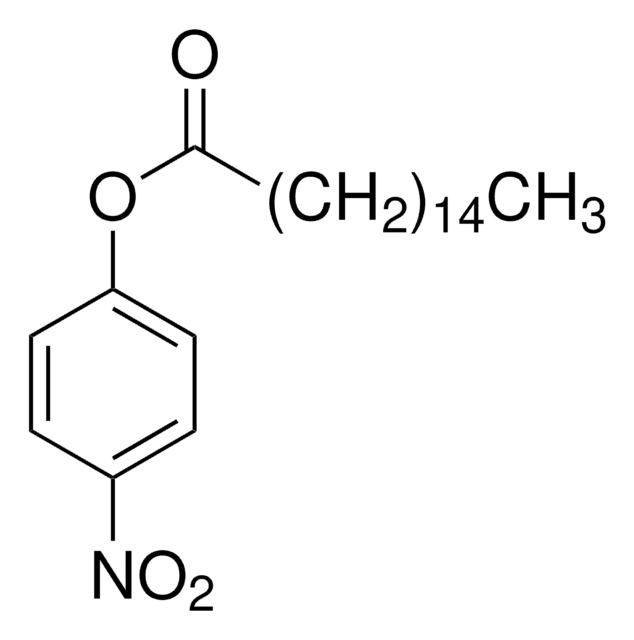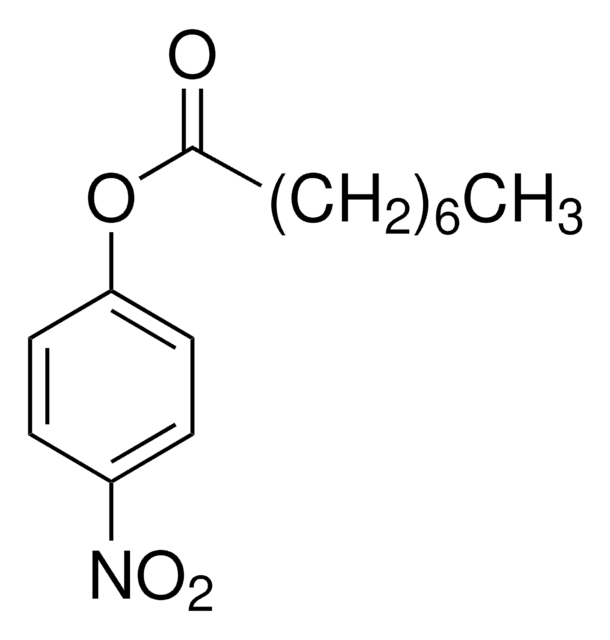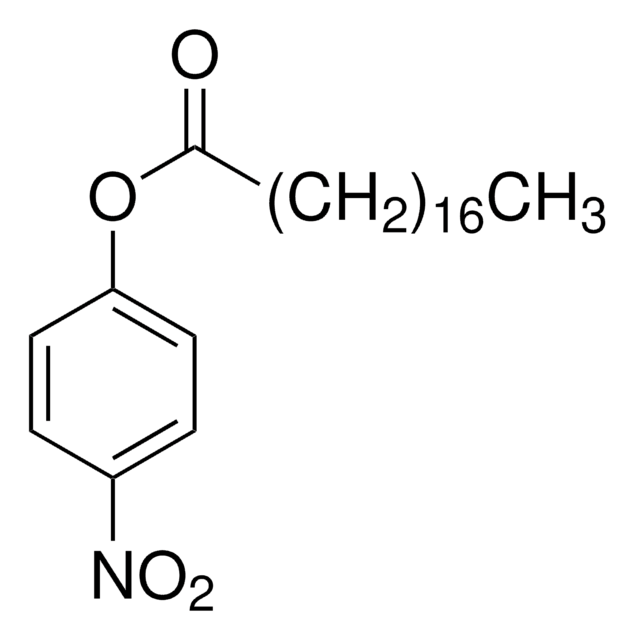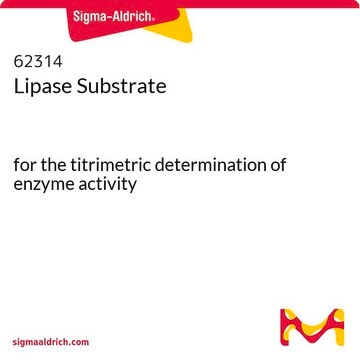70124
4-Nitrophenyl myristate
lipase substrate, ≥95.0% (HPLC), powder
Synonym(s):
4-Nitrophenyl tetradecanoate
About This Item
Recommended Products
product name
4-Nitrophenyl myristate, ≥95.0% (HPLC)
Quality Level
Assay
≥95.0% (HPLC)
form
powder
solubility
chloroform: 50 mg/mL, clear to very slightly hazy, colorless to dark yellow
storage temp.
−20°C
SMILES string
CCCCCCCCCCCCCC(=O)Oc1ccc(cc1)[N+]([O-])=O
InChI
1S/C20H31NO4/c1-2-3-4-5-6-7-8-9-10-11-12-13-20(22)25-19-16-14-18(15-17-19)21(23)24/h14-17H,2-13H2,1H3
InChI key
ZBBNFJIVAHGZKA-UHFFFAOYSA-N
Application
- bile salt-activated lipase
- esterase
- neutral lipase
Signal Word
Warning
Hazard Statements
Hazard Classifications
Skin Irrit. 2
Storage Class Code
11 - Combustible Solids
WGK
WGK 3
Flash Point(F)
Not applicable
Flash Point(C)
Not applicable
Personal Protective Equipment
Certificates of Analysis (COA)
Search for Certificates of Analysis (COA) by entering the products Lot/Batch Number. Lot and Batch Numbers can be found on a product’s label following the words ‘Lot’ or ‘Batch’.
Already Own This Product?
Find documentation for the products that you have recently purchased in the Document Library.
Customers Also Viewed
Our team of scientists has experience in all areas of research including Life Science, Material Science, Chemical Synthesis, Chromatography, Analytical and many others.
Contact Technical Service















